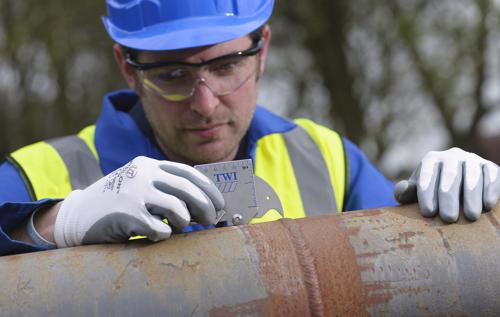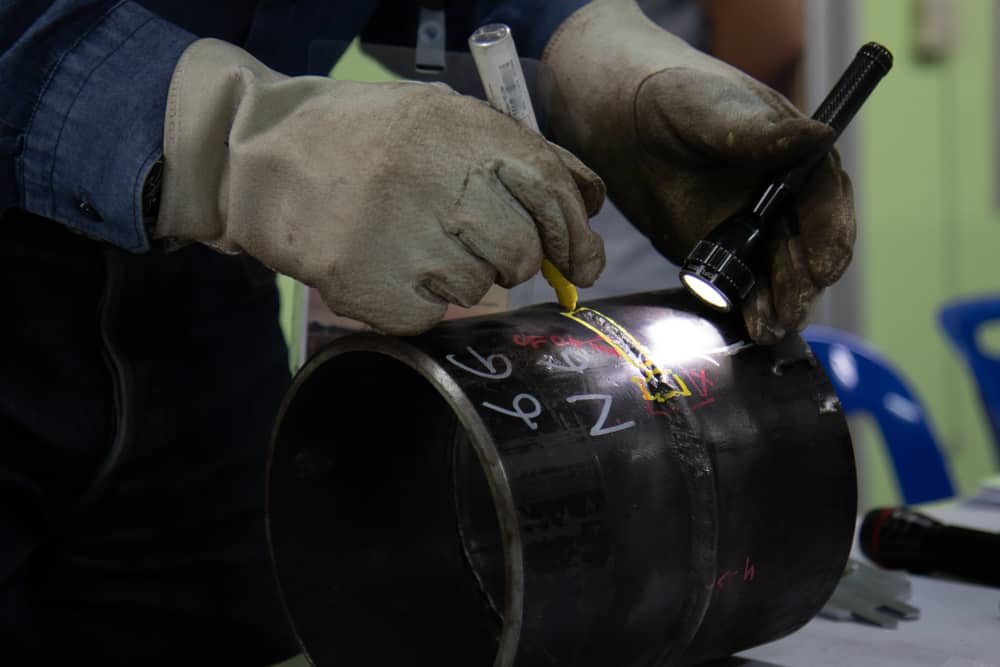Checking Out the Basics of Welding Evaluation: A Comprehensive Examination of Processes, Devices, and the Significance of High Quality Control in Welding Industries
Welding assessment functions as a cornerstone in the upkeep of safety and security and structural integrity throughout different markets. By analyzing the important procedures and devices utilized in these examinations, one can appreciate the intricate equilibrium between quality control and conformity with recognized standards from organizations such as AWS and ANSI. The methods used, including aesthetic and non-destructive screening methods, are pivotal in discovering imperfections that can jeopardize the resilience of welded frameworks. Understanding the effects of these methods elevates important inquiries about their efficiency and the future direction of high quality assurance in welding.
Value of Welding Inspection
Welding evaluation plays a crucial function in guaranteeing the stability and safety and security of welded structures. It acts as an organized strategy to examining weld quality, determining prospective flaws, and making certain compliance with recognized requirements and specifications. The value of welding examination expands past mere adherence to regulations; it is critical in securing human lives and protecting investments in facilities.
Faulty welds can cause disastrous failings, leading to considerable economic losses, injury, or loss of life. Therefore, strenuous examination processes are crucial to spot issues such as inadequate penetration, porosity, or splits prior to they intensify right into essential failures. Furthermore, efficient welding inspection adds to the overall efficiency and longevity of frameworks, making sure that they can withstand the conditions for which they were developed.
Furthermore, the implementation of welding examination promotes a culture of top quality and liability within the welding market. By prioritizing examination, companies demonstrate their dedication to excellence, consequently enhancing their reputation and competition in the marketplace. Inevitably, welding evaluation is not just a step-by-step action but a fundamental component of design stability and safety and security assurance, vital for the effective execution of welding jobs across different sectors.
Secret Assessment Processes
An extensive strategy to welding evaluation entails several crucial processes that are crucial for guaranteeing weld top quality and architectural stability. The initial critical process is aesthetic examination, which permits assessors to identify surface flaws such as splits, porosity, and improper bead appearance. This approach acts as a preliminary assessment to make certain that the weld fulfills specified standards.

In addition, devastating screening might be executed on example welds to examine their mechanical properties and efficiency under stress and anxiety. This process involves tensile, impact, and exhaustion screening to confirm that the weld can stand up to operational conditions.
Last but not least, documents and coverage are important components of the examination procedure. Maintaining exact documents of inspections, monitorings, and examination results helps make certain conformity with industry criteria and helps with continuous renovation in welding techniques. Collectively, these key procedures form the foundation of effective welding examination and quality control.
Devices for Weld Assessment
Countless tools are crucial for efficient weld evaluation, each created to assess various aspects of weld top quality and performance. Among one of the most widely made use of are visual assessment tools, consisting of magnifying glasses and borescopes, which enable examiners to recognize surface flaws such as splits, porosity, and incorrect blend.
Additionally, ultrasonic testing (UT) equipment is critical for discovering inner flaws. This tool uses high-frequency sound waves to reveal discontinuities within the weld, making sure the honesty of the material. Radiographic testing (RT) tools, which use X-rays or gamma rays, in a similar way provide insight into the interior framework of welds, permitting the identification of voids or additions.
For specific dimensions, calipers and gauges play a considerable role in ensuring and identifying weld measurements adherence to defined resistances. Solidity testers assess the mechanical properties of the weld, guaranteeing it fulfills performance standards.

Strategies for Examining Quality
Exactly how can the quality of welds be accurately examined? A variety of strategies are used to examine weld integrity and ensure adherence to defined standards. Aesthetic assessment is the most essential technique, allowing assessors to identify surface area problems such as splits, porosity, or undercutting. This non-destructive strategy serves as an initial analysis before even more sophisticated approaches are used.
Ultrasonic screening (UT) is an additional popular strategy that utilizes high-frequency acoustic waves to spot inner flaws within the weld. Houston Welding Inspection. This technique gives an extensive sight of the weld's stability without compromising its architectural honesty. Furthermore, radiographic screening (RT) utilizes X-rays or gamma rays to disclose inner problems, using detailed insights right into weld top quality
Magnetic particle testing (MT) is effective for finding surface area and near-surface gaps in ferromagnetic materials, making use of magnetic areas and colored bits to highlight flaws. Last but not least, dye penetrant testing (PT) can be employed to uncover surface-breaking defects by using a color that permeates right into splits and is subsequently revealed.
Conformity With Sector Standards
Compliance with sector standards is essential for guaranteeing the high quality and security of bonded frameworks. These requirements, developed by organizations such as the American Welding Culture (AWS) and the American National Standards Institute (ANSI), supply standards that govern the welding procedure, materials, and inspection protocols. Sticking to these criteria not just makes sure the structural stability of welds but also mitigates threats related to failings that might cause disastrous repercussions.

Welding examiners are tasked with validating compliance with these criteria throughout the welding procedure (Houston Welding Inspection). This like this includes assessing welding treatments, checking welder qualifications, and carrying out detailed examinations of the end product. Non-compliance can lead to Bonuses significant economic consequences, job delays, and damages to a company's online reputation
Moreover, compliance promotes a culture of quality control within the company. By establishing clear expectations and criteria, companies can preserve consistency in their outcome and boost general productivity. Normal training and updates on standards are necessary to maintain personnel notified and experienced, making certain that all aspects of welding procedures fulfill or exceed regulatory needs. Inevitably, commitment to industry standards functions as a foundation for excellence in the welding market, advertising safety and security and integrity in welded structures.

Verdict
To conclude, welding inspection works as an essential component in maintaining the safety and integrity of welded structures. With the application of crucial assessment processes and the use of innovative devices and strategies, prospective flaws can be recognized and resolved properly. Adherence to market requirements makes certain compliance and advertises a society of high quality within the welding industry. Ultimately, strenuous examination methods not only protect human lives yet additionally improve the sturdiness and efficiency of welded constructions.
In addition, the execution of welding evaluation fosters a society of top quality and responsibility within the welding industry. Inevitably, welding evaluation is not simply a procedural action but a basic component of design integrity and security assurance, crucial for the successful implementation of welding jobs throughout different fields.
An extensive strategy to welding evaluation entails several crucial processes that are essential for making sure weld quality and structural honesty. find this These standards, established by companies such as the American Welding Culture (AWS) and the American National Criteria Institute (ANSI), supply guidelines that control the welding process, materials, and assessment methods.Welding inspectors are charged with validating conformity with these standards throughout the welding process.